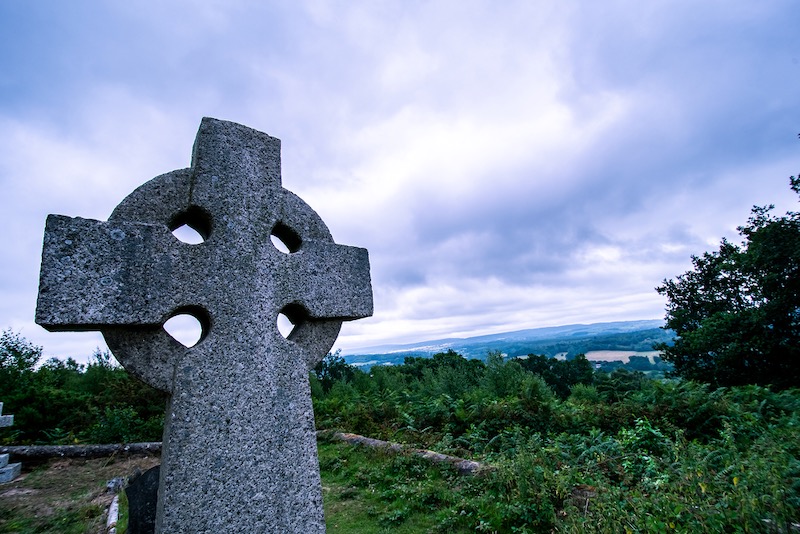There is a danger that abstracting general principles from a form of religious life to put them into a lay or social context can drift a long way from the life of nun, monk or oblate and fall too much into the groove of occupational therapy, not real self-examination. It could become just another palliative.
The essays in Rowan Williams’ The Way of Benedict, published last January, discuss social life and God and not just individual personal growth. The common good does not lie in breaking away into imaginary deserts in a so-called Benedict Option – deserts always were cities, with people coming all the time into the margins to consult the holy women and men. It comes from learning the kind of spirituality that can support a democracy.
Rowan Williams has not been the only author writing recently about the Way. If 20 years ago is not that long when discussing a tradition of 1500 years, Esther de Waal’s 1990 book got a new edition in 1999. Her Living with Contradiction: Benedictine monasticism for everyday living came out in 2003. The “everyday Benedictinism” idea also animated Work and Prayer in 1993, by Columba Cary-Elwes and Catherine Wybourne, then Finding Sanctuary and Finding Happiness by Christopher Jamieson, Monk Habits for Everyday People by Dennis Okholm and Be a Monastic and Not Leave Your Day Job by Benedict Tvedten.
That spirituality would be honest about difficulties, rather as a Benedictine symbol places PAX within a crown of thorns. It is unafraid of unresolved things, as life is a workshop and a school in service. It has three strands: listening, so that others become real; praying, so that we become real to ourselves (since our relation to God is the truth of ourselves); working, so that we stay grounded not spiritualised. Then there is the history of Benedictine monasteries – it should be a contradiction in terms to say proud history – as islands of civilisation through the Dark Ages, blocks of stability for the future.
Finally, the pragmatism of this way. The rule is a rule for beginners. The rules it contains for when and what to pray may be adjusted. Routine and calendar are liturgical ideas that remind us of transformation over time, whereas today we tend to think they do the reverse and try to live in an eternal present like God, without God.
Given the atomic individualism we all struggle through today, it seems useful advice to say that before you can live with yourself – say, as a hermit – you must first internalise the disciplines of community. Romanticism told us short-cuts were available, and the weak egos which Romanticism produced are now fleeing to over-strong groups, to communitarianism and authoritarianism, losing the freedom they thought authenticity might give them, when it was only fidelity to ourselves. Instead, Benedict’s looks like a middle way: real people, formed among other people of true depth, able to live with individuality and dignity together.
Yet the whole discussion floats free of material circumstances. The more firmly-established the community the less it sits on the breadline. Medieval monasteries gave out the bread because they had a lot of it, and even if people cannot live on bread alone, there is no short-cut to the life of the angels, either, and the longer an institution continues, the less immediate the need first for work, then for prayer, then for listening becomes. Practising these things makes no sense where there is no need. Whereas each day should be conversion, people who have known each other a long time can retreat from it. Their accommodations with one another become naturalised and can even come to be thought supernatural. Holy principle, hieros arche, can become pagan hierarchy.
Benedict’s Rule does its best to shake this up. He brings movement into the monastery. False peace should not be exchanged because it seems easier than change; the abbot may revise the ranks of the monks; the monks may choose not to re-elect the abbot; the stranger who suddenly arrives will be treated as Christ. These are the reasons that things will not become too settled, nor settle on what is not really yet good. But the community is not the whole world. If for whatever reason strangers stop coming, and new people are not admitted, then that middle way of movement and stability is lost. There are endowments, and no change.
Other orders in the Church – Franciscans and Augustinians – were made more mobile exactly so that it would not be a matter of waiting for people to come to them, or do it their way. It is a middle way which individuals can find; Michael Casey, although a Cistercian, once compared it to balance on a surfboard. Whereas Rowan Williams writes about the disciplines which should be internalised before society can cope with being spiritually alone, we could be writing about what religion should learn from the many people it has passed this onus on to.
Pope Francis has announced a theme of “come and see”. Reading that, a lot of people will assume it means that society should come and see Christ in the Church. But look up John 1:46. The words are said by an apostle to a stranger, and they go together to see Christ, at a point when He alone is the Church. Perhaps we’ve been too quick to assume we knew “where he dwelt” (John 1:39). Perhaps if he is to continue to dwell where we thought, that place must become hospitable again. And perhaps the irony is, that the people with everything have little to give.
Making assumptions about who is the guest and who is the host may not be the way to proceed, even if all our things have been holding us back, and if we have made a desert of our peace it is perhaps time to be generous and stop.



 Loading ...
Loading ...
What do you think?
You can post as a subscriber user ...
User comments (0)